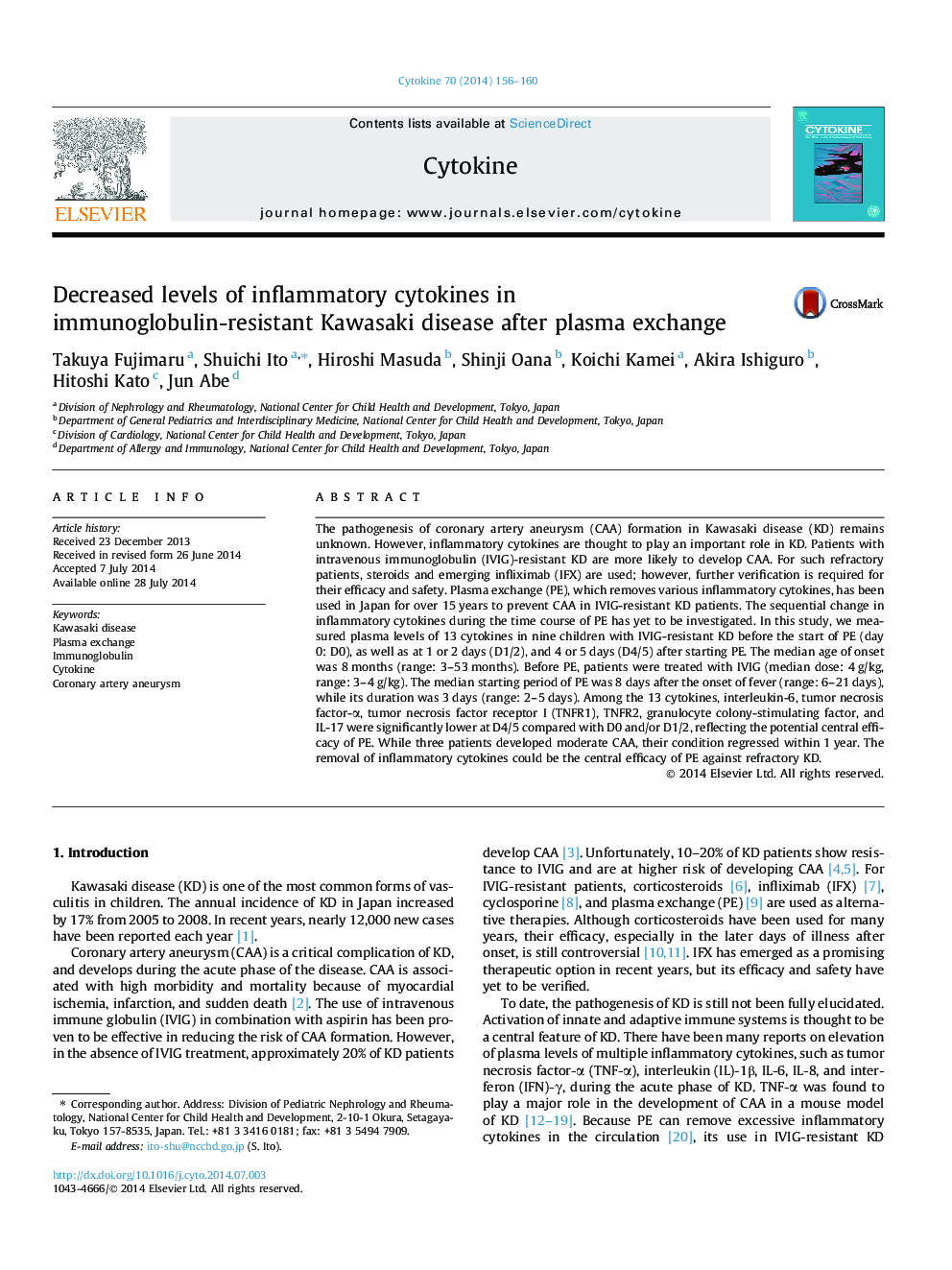| کد مقاله | کد نشریه | سال انتشار | مقاله انگلیسی | نسخه تمام متن |
|---|---|---|---|---|
| 5897088 | 1568736 | 2014 | 5 صفحه PDF | دانلود رایگان |
- Plasma exchange is an appropriate alternative treatment for IVIG-resistant Kawasaki disease.
- Levels of IL-6, TNF-α, TNFR1, TNFR2, G-CSF and IL-17 decreased after plasma exchange.
- Coronary artery aneurysms regressed one year after plasma exchange.
The pathogenesis of coronary artery aneurysm (CAA) formation in Kawasaki disease (KD) remains unknown. However, inflammatory cytokines are thought to play an important role in KD. Patients with intravenous immunoglobulin (IVIG)-resistant KD are more likely to develop CAA. For such refractory patients, steroids and emerging infliximab (IFX) are used; however, further verification is required for their efficacy and safety. Plasma exchange (PE), which removes various inflammatory cytokines, has been used in Japan for over 15 years to prevent CAA in IVIG-resistant KD patients. The sequential change in inflammatory cytokines during the time course of PE has yet to be investigated. In this study, we measured plasma levels of 13 cytokines in nine children with IVIG-resistant KD before the start of PE (day 0: D0), as well as at 1 or 2 days (D1/2), and 4 or 5 days (D4/5) after starting PE. The median age of onset was 8 months (range: 3-53 months). Before PE, patients were treated with IVIG (median dose: 4 g/kg, range: 3-4 g/kg). The median starting period of PE was 8 days after the onset of fever (range: 6-21 days), while its duration was 3 days (range: 2-5 days). Among the 13 cytokines, interleukin-6, tumor necrosis factor-α, tumor necrosis factor receptor I (TNFR1), TNFR2, granulocyte colony-stimulating factor, and IL-17 were significantly lower at D4/5 compared with D0 and/or D1/2, reflecting the potential central efficacy of PE. While three patients developed moderate CAA, their condition regressed within 1 year. The removal of inflammatory cytokines could be the central efficacy of PE against refractory KD.
Journal: Cytokine - Volume 70, Issue 2, December 2014, Pages 156-160
